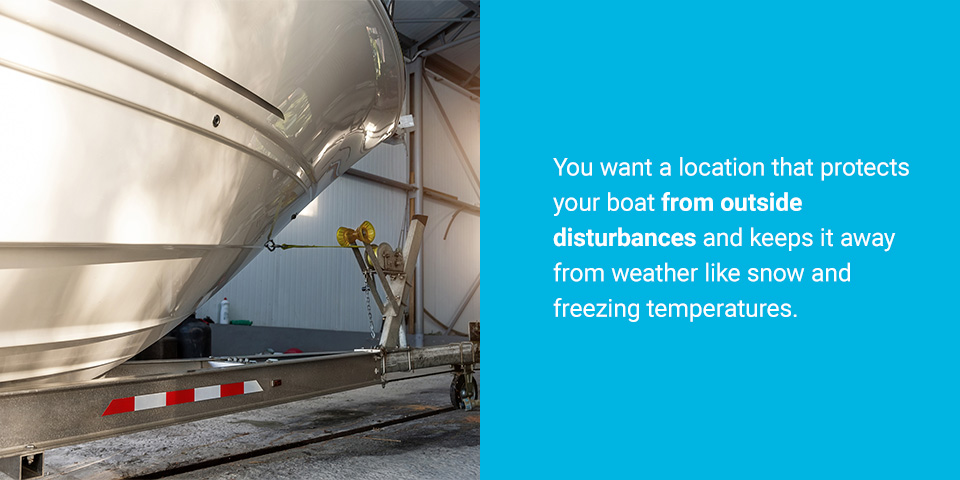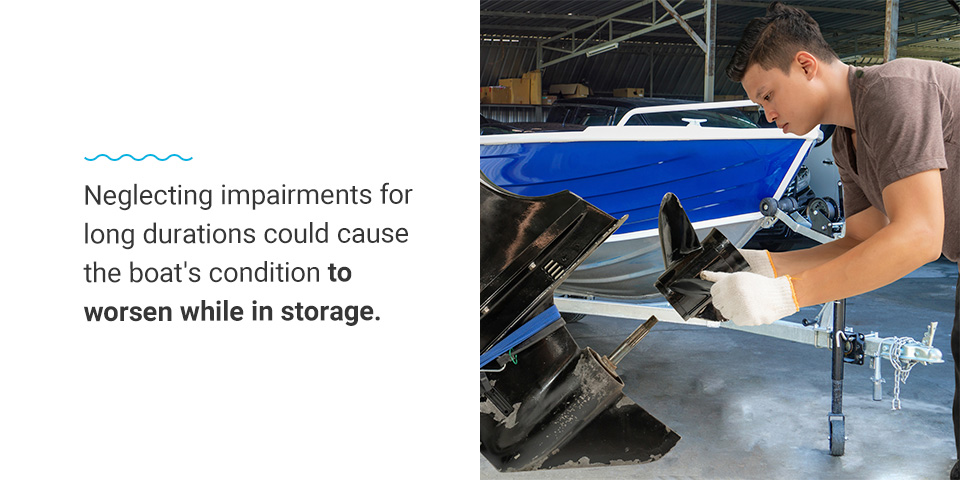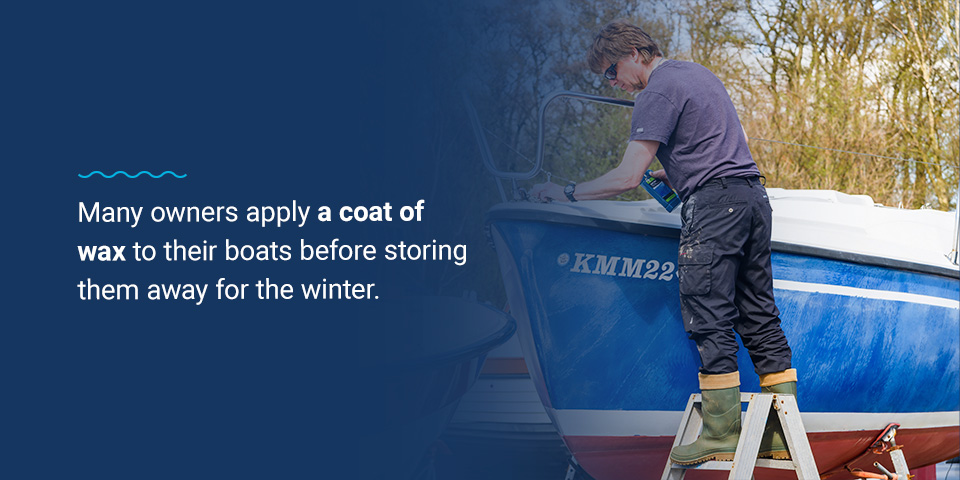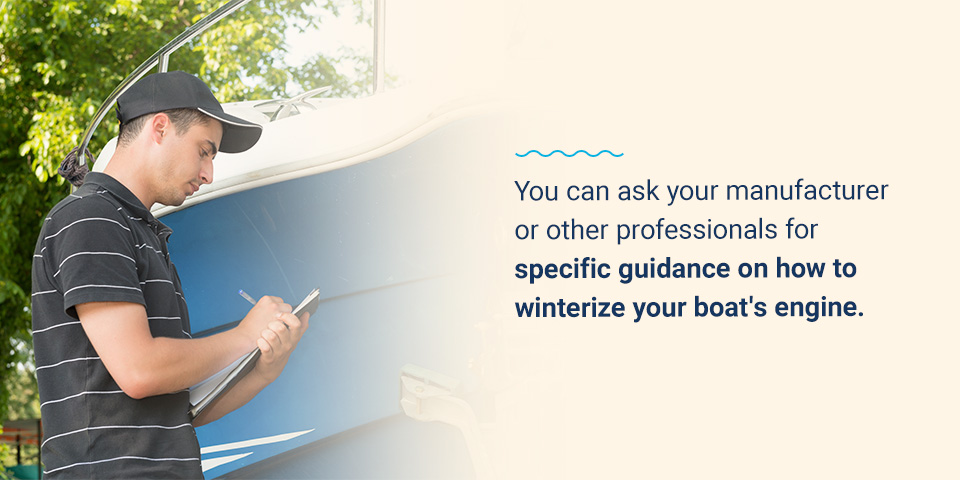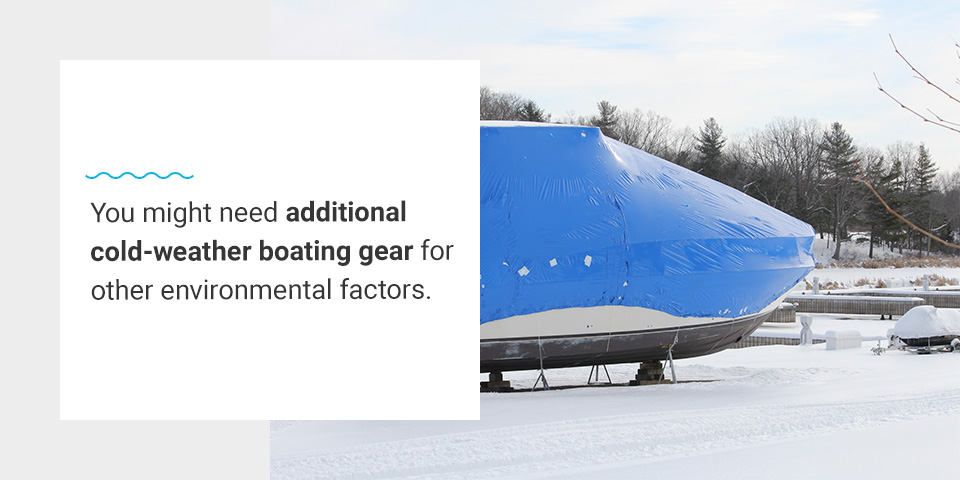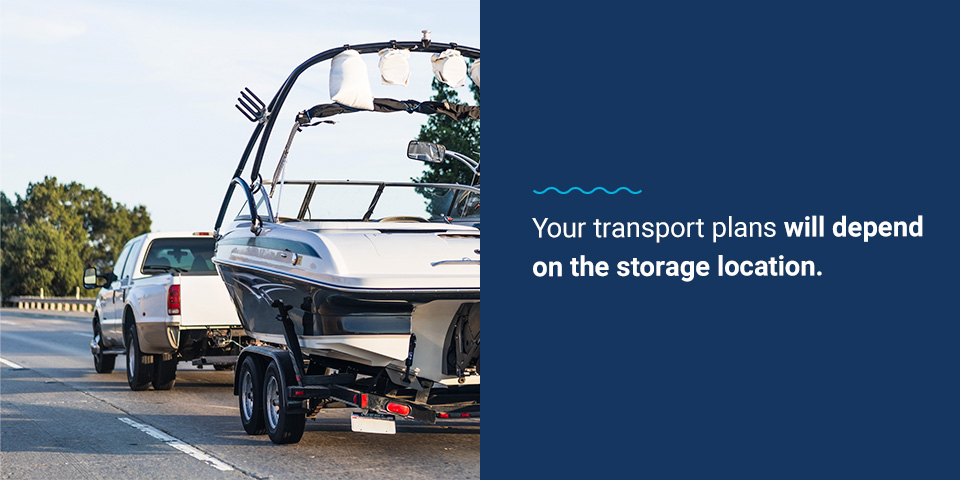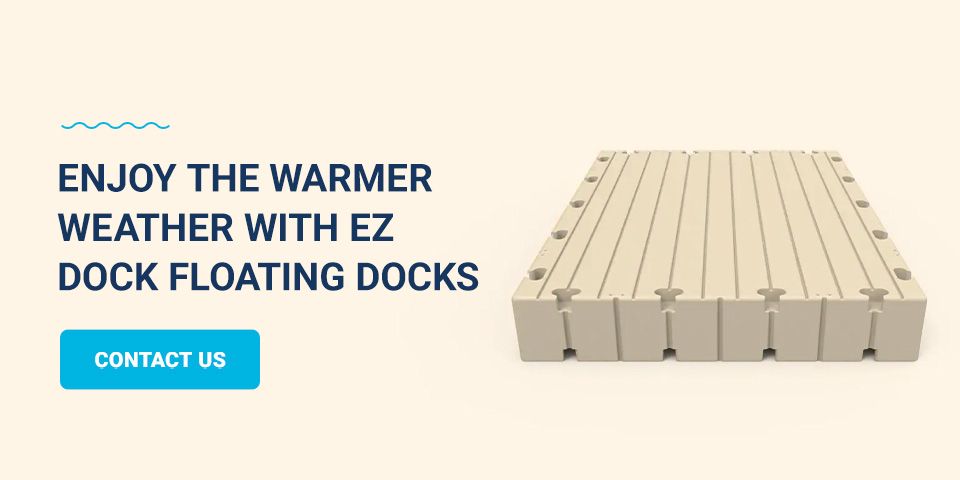Filters
Winter Boating Equipment Inspection List
As winter weather settles in, boat usage becomes less frequent. Long summer days turn into chilly temperatures and early sunsets, giving you less time to enjoy your time out on the water comfortably. Shielding your boat from wintry conditions can improve its performance and help it last longer.
The best way to protect your boat from winter weather is to move it to a safe storage location. These areas reduce boat exposure to snow, wind and freezing temperatures. In turn, they can stay in their best condition, ready for use once warm weather returns.
But before moving your boat to storage, it’s important to inspect them first. From thoroughly cleaning to inspecting for damages, protecting your boat can have many steps. Following a winter boat inspection list can help you remember every component. Then, you can get started more quickly in the warmer months.
Read on to learn more about some essential steps for boat storage preparation.
Winter Boat Inspection Checklist
The right inspection checklist can keep your boat safe throughout the winter. Following a step-by-step list can help you remember all the proper steps before transporting it to storage.
Here are seven steps for inspecting your boat before winter storage:
1. Find a Storage Location
Your first step for winter preparations should be to find a proper storage location. Most boat owners seek a safe place to store their boats during the winter, and space might run out if you wait too long. It’s best to look for space early to find one that meets your needs.
The best storage sites are secure, dry and cost-effective. You want a location that protects your boat from outside disturbances and keeps it away from weather like snow and freezing temperatures. Here are some common options for winter boat storage:
- Your property: A low-cost storage option is your property. Instead of moving the boat to a secondary area, you can safely store it in your residence. For instance, many owners store boats in their garages or sheds. Garages are dry, enclosed and secure, making them excellent options for boat storage. Another benefit of using your own property is that you don’t have to pay additional fees. You can access your boat anytime and avoid monthly rates or other complications.
- Dry stacked storage: Another storage opportunity for your boat is dry stacked storage. This type consists of vertically-stacked racks in indoor facilities. Cranes and other lifting equipment raise the boats and stack them in organized positions. Dry stacked storage is highly secure and keeps your boat away from winter conditions. However, you will likely have to pay a monthly rate for the location. Consider your available budget before committing to a unit. You can also use your budget to narrow down options.
- Self-storage facilities: You can also find a self-storage unit to house your boat for the winter. Search for options that meet your boat’s size and specifications. Self-storage also provides maximum protection. You are usually the only one with unit access, allowing you to check up on it periodically. Like dry stacked storage, self-storage also requires a regular monthly payment.
Storage availability depends on your local area. You can browse units early on and find the location that matches your budget and preferences. Try to plan for storage a few weeks or months before winter arrives. That way, you can make sure you have a plan in place.
2. Look for Damages
Once you have a storage location in mind, you can begin preparing your boat for transport. You should ensure your boat is in its best condition before moving it into storage so that you can use it as soon as it grows warmer. You can retrieve it from the dock, marina or other current location and get started.
One of the best first steps is to inspect your boat for damages. Neglecting impairments for long durations could cause the boat’s condition to worsen while in storage. During your inspection, check crucial components like:
- Wheel: Test your wheel’s ability without turning on your engine. The best way to test the wheel is with the sterndrive. Move the sterndrive from left to right and see how it affects the steering wheel. As you move the sterndrive, the steering wheel should also rotate without lags. If you notice something wrong with the wheel, get it fixed soon or contact a professional for assistance.
- Shift cable: Next, inspect your shift cable. Pull it like normal and look for any unusual behavior. For instance, stiffness typically indicates that the cable is growing old and losing power. You should also look for cracks or kinks, which can cause poor performance. If you notice anything wrong, you should replace the cable. Or, use lubricant to improve its condition. When in doubt, it’s best to contact maintenance professionals for assistance.
- Seats: It’s also important to look at your boat’s seats before moving it to storage. While you use seats frequently, you might neglect regular maintenance techniques. Your seats might be loose, wobbly or contain frayed fabric. You can tighten the screws to get the seats back into their correct positions or replace the upholstery.
- Doors: Next, search for potential damages in your boat’s doors. Make sure they can open and close fully without any issues. Listen for any squeaks or strange noises as they move. You can lubricate and clean the doors for additional protection.
- Gauges: Your gauges are crucial for safety while out on the water. These tools provide specific information about fuel levels, speeds and more. During your inspection, make sure you can read all gauges properly and that they reflect the correct quantities. If you notice anything incorrect, consider a replacement to ensure accuracy when sailing.
- Battery: Make sure the battery levels are sufficient. You can typically recharge them if they’re above a certain capacity, which can prevent extra replacements.
- Safety equipment: Your boat’s safety equipment has a direct impact on you and your passengers’ well-being. During your inspection, double-check tools like fire extinguishers, first aid kits and life jackets.
After you’ve completed your inspection, it’s time to address any necessary repairs. Your repair plan will likely depend on your expertise, budget and available time. For instance, larger replacements will cost more and take longer durations to fix. Many boat owners have the necessary experience and ability to fix their boats by themselves. Or, you might need to contact professional services to address damages or breaks. Either way, you should resolve them before moving your boat into storage.
3. Clean the Interior
Next, you should clean your boat thoroughly before transferring it to storage. It’s better to clean it beforehand to prevent dust and grime from building up throughout the winter. And as you clean, you might notice additional damages or necessary repairs.
As you clean the interior of your boat, check components like:
- Seat cushions: You might use either vinyl or fabric for your boat’s seats. As you clean, check them for signs of dirt, mold, mildew or other growth. Clean any stains or dirt from the seats to keep them from causing lasting damage. In addition, the fabric might have tears or rips. You can repair these with patching kits or find local upholstery repair services. Lastly, see if any cushions have lost dimension or are now uncomfortable for sitting. You can replace those before moving the boat to storage.
- Carpet and floor: Next, look closely at your boat’s floors. If you have carpet, make sure it is firm and evenly laid across the surface. If the carpet is loose in some places, inspect whether the surface beneath it is damp or soft. If the floor is hard, you can use carpet glue to stick the fabric to the ground again. But if you notice dampness, it could be a sign of rotting. You should address rot as soon as possible before it damages the entire floor. You can replace parts of the floor or contact a professional for more guidance.
- Hard surfaces: Lastly, scrub all hard surfaces in your boat. You can use a sponge and soap to wipe down all hard areas, removing stains or grime. Sponges are excellent options because they won’t scratch or leave residue on surfaces. You can also find high-strength soaps for boating applications that will remove tough stains. After you finish washing, remember to dry everything completely with a microfiber cloth or a towel.
4. Clean the Exterior
You should also clean your boat’s exterior. Here are some steps to follow while you clean the external area:
- Clean the entire surface: If you leave dirt, mineral deposits or grime throughout the winter, they could become challenging or even impossible to remove later. You can use hull cleaners or other high-quality options to give it a new shine. To address mineral deposits, spray them with cleaner and let the material soak for an extended duration. Many owners use toilet bowl cleaners to remove mineral deposits, which can cut through tough grime. Use pressure washing to remove the cleaner, then follow up with additional scrubbing if the spots persist.
- Look for chips or cracks: As you clean, inspect the surface for chips, gouges or cracks. If you notice any, you can complete a self-repair or contact a specialist for repairs. You might also discover faded paint, which you can fix with a quick touch-up or additional coat.
- Apply wax: Lastly, many owners apply a coat of wax to their boats before storing them away for the winter. Marine wax works deep into your boat’s core, repelling water and filtering out UV rays. Putting on a coat before storage can add even more protection while it rests during winter.
As always, you can contact professionals for more specific guidance on cleaning and prepping your boat for storage. It’s better to ask for extra advice than make a choice that impacts your boat’s well-being.
5. Winterize the Engine
One of the most essential components of storage preparation is winterizing your engine. This action protects the engine from different types of winter damage and ensures it’s ready for use once the cold months end. For instance, these types of winter conditions can harm your boat without proper winterization:
- Standing water: If you don’t remove water from your boat before storage, it could freeze and put intense pressure on your engine. This pressure can build up until parts break or lose the ability to function. And during multiple thawing-and-freezing cycles, the problem could grow even worse.
- Humidity levels: Residual water can also cause humidity levels to rise as your boat rests in storage. The humidity can cause corrosion or rust formation to occur.
- Freezing temperatures: Lastly, frigid temperatures can put excess pressure on different boat components, from the hull to the engine. Winterizing your engine beforehand can reduce these effects.
You can ask your manufacturer or other professionals for specific guidance on how to winterize your boat’s engine. These are typical steps to follow during an engine winterization:
- Change the oil: The winter preparatory period is a great opportunity for an oil change. According to experts, you should change your oil after every 50-100 hours of use. You should also change your oil filter during the process.
- Flush the system: Next, flush your system with fresh water to rinse it. Afterward, let all of the water drain out to ensure there isn’t any standing water left over.
- Wash the engine: Now, you can wash the engine more completely with soap and water. Once you’re finished, make sure to rinse all of the soap away. Give it time to dry.
- Fog the cylinders: You can also apply fogging oil to engine components after washing them with soap and water. This tool prevents rust and adds more shielding for storage.
- Use additives: As a final step, many boat users top off the boat tank with gas and stabilizers. Then, they run the engine for a few minutes to allow the additives to distribute through the fuel lines.
6. Use Coverings
You can also place additional coverings on your boat before storing it. While storage is one of the best options for winter boat protection, you might need additional cold-weather boating gear for other environmental factors. For instance, coverings can add a barrier to dust, dirt, UV rays, weather and more.
While most owners have a boat covering, other available options include:
- Adding a tarp: Tarps are excellent options for winter storage. They’re available in a wide range of sizes, thicknesses and specifications. You can find one that matches your boat’s shape, then secure it tightly over the boat for storage.
- Using shrink wrap: Another common example of winter weather boating equipment is shrink wrap. Owners often use it for extra for storage protection. This material is impermeable, preventing moisture, mildew and small organisms from reaching your boat.
- Sealing holes and cracks: Lastly, seal any openings or cracks in the boat. You can use sealants to close these off.
You should use these options in addition to a boat covering for a comprehensive solution.
7. Move the Boat Into Storage
After cleaning, repairing and wrapping your boat, you can make arrangements to move it into storage. Your transport plans will depend on the storage location. For instance, if you’re moving your boat to your property, you know exactly where to move it. But if you’re using a self-storage unit or stacked unit, there might be more specifications about when you can drop off your boat.
If you’re using a storage unit, the owner might require official documents or identification when you arrive. You might have to bring components like:
- Make and model of watercraft
- Photo ID of the owner
- Boat registration number
Make sure your tarps, shrink wraps or other coverings are secure before moving the boat. You can tow it behind your car or truck. Or, you could hire professional movers or trailers to transport your boat.
Once you arrive, move the boat carefully into the storage space. Lock your boat and make sure it’s secure before leaving it. Remember your key or other access information so that you can reach the boat easily during winter.
Benefits of Inspecting and Preparing Your Boat Before Winter Storage
Following a detailed inspection and protection routine before storage can bring many benefits to your boat. While it’s tempting to move it into storage without attending to it, taking the extra steps can make a significant impact on your boat’s health.
Here are some advantages of thorough boat storage preparation:
Extending Your Boat’s Lifespan
Harsh wintry conditions can weaken your boat or damage it entirely. Without an initial inspection, you might miss minor damages before storing it. These issues could grow even worse during the winter. Or, they could combine with other problems and grow worse. For instance, you might not winterize your engine properly, and then water droplets accumulate during the winter and cause cracks in the engine.
By taking extra time to prepare your boat for storage, it can maintain excellent condition during colder weather. Once summer returns, you can begin using it with minimal preparations.
Reducing Repair Costs
Regular maintenance can also reduce your boat’s repair costs. Without the right care techniques, your boat’s condition could degrade. If you retrieve your boat from storage and discover multiple issues with your engine and interior, you will have to pay hefty repair costs before you can return to the water. Boat winterization reduces the need for consistent and costly repairs. By putting the work in earlier, you can save money in the long term.
Maintaining Safe Use
Lastly, boat inspections are essential for your safety. Inspections make you look closely at all of your boat’s details. During this process, you become more likely to notice small cracks, tears or flaws. Overall, these reviews allow you to maintain a comprehensive view of your boat’s health. You can address issues before they grow more severe and impact boat use.
For example, you might not notice a small engine issue without a thorough inspection. The next time you use the boat, the issue could grow and cause a safety problem for those onboard. Instead, conducting regular inspections helps you provide the safest experience possible.
Enjoy the Warmer Weather With EZ Dock Floating Docks
A winter storage checklist and cold weather boating equipment can help you make sure you remember every step in storage preparation. And once the weather gets warm again, you can retrieve your boat in top condition. At EZ Dock, we understand the importance of maintaining safe equipment. We offer a wide range of outdoor water products, including docks, launches and walkways. Our products make it easier for you to access your boats and get started with summer fun.
EZ Dock supplies products across the United States, meeting customers in the best location for them. To get started with EZ Dock, request a quote or contact us today.


